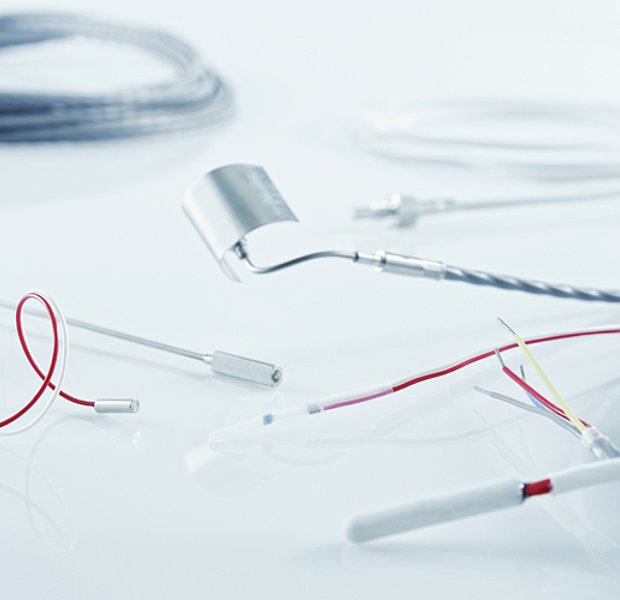
Cable sensor
Cable resistance thermometer with shrinking tube, metal or ceramic sleeves are commonly used solutions for a wide range of temperature measuring tasks.
Technical information on cable sensors
General
Cable resistance thermometers are based on Pt100 sensors as per DIN EN 60751 as standard. Designed with a shrinking tube or metal or ceramic sleeve, these simple temperature sensors are commonly used solutions for a wide range of temperature measuring tasks. They are predominantly used in the lower to medium temperature range of -40°C ... 260°C. Special implementations with an operating temperature of up to 400°C are also part of the portfolio. Other nominal resistance values of 500 Ω or 1000 Ω and other resistance materials like nickel (Ni) and copper (Cu) are available as options.
Use
The sensors are predominantly used for thermal monitoring of the winding of electrical machines. They are also suitable for measuring the temperature in laboratory and test facilities and in gaseous, liquid and solid media, and are used in explosive areas. Moisture-resistant, IECEx and ATEX-approved or particularly high-voltage-resistant sensors with a dielectric strength of up to 20 kV are possible in various, mostly strain-relieved, constructions. Customer-specific dimensions or feeds are possible.
Operating principle
The various cable resistance thermometers consist of a basic sensor with a rigid connected feed. As well as the Pt100 measuring resistors (M-OK) installed as standard, PTC thermistors, NTC thermistors and silicon sensors (KTY) can also be used. The basic sensors are connected to the supply line by welding (resistance welding, laser welding etc.), soldering (soft or hard soldering) or crimping. The sensor is then fitted with a shrinking tube or metal or ceramic sleeve to protect it against external mechanical influences. The measuring ranges of the individual sensor types vary depending on the insulation.